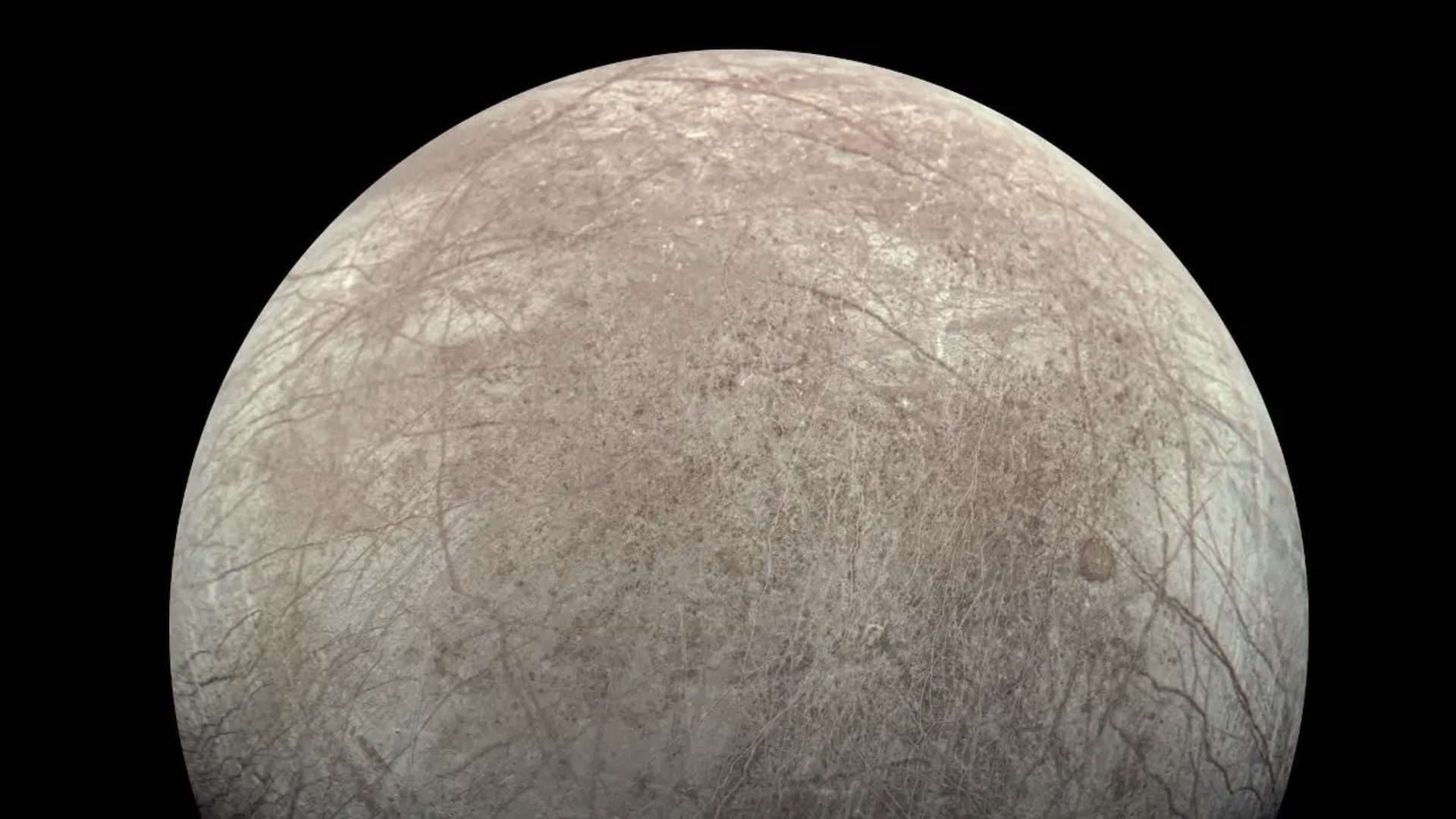Livescience
7d
303

Image Credit: Livescience
James Webb telescope spots weird changes on Jupiter's icy moon Europa
- Recent observations from the James Webb Space Telescope reveal changes on Jupiter's moon Europa, indicating active geologic processes and an internal water source.
- The presence of amorphous and crystalline ice on Europa's surface suggests the influence of an underground ocean nearly 30 kilometers beneath the icy shell.
- Evidences like fractured surface materials and the presence of CO2 hint at processes pushing materials from Europa's interior ocean to the surface.
- Europa's surface is affected by radiation from Jupiter's magnetic field, leading to disruptions in the crystalline structure of ice.
- JWST's spectral studies show varying ice crystallization patterns on Europa, pointing to rapid resurfacing processes fueled by tidal heating and radioactive decay.
- Discovery of crystalline ice in regions like Tara Regio challenges previous assumptions about Europa's surface composition and porous nature.
- Unusual surface features, including evidence of sodium chloride and strange chemistry, suggest complex geologic activity below Europa's icy shell.
- The formation of chaos regions on Europa may involve material upwelling through diapirs, leading to rapid freezing of water into crystalline ice.
- Processes like plumes and impacts also play a role in delivering water and forming crystalline ice on Europa's surface, which is constantly evolving.
- JWST's findings contribute to the growing evidence for a liquid ocean beneath Europa's icy surface, making it a dynamic and ever-changing moon.
Read Full Article
18 Likes
For uninterrupted reading, download the app